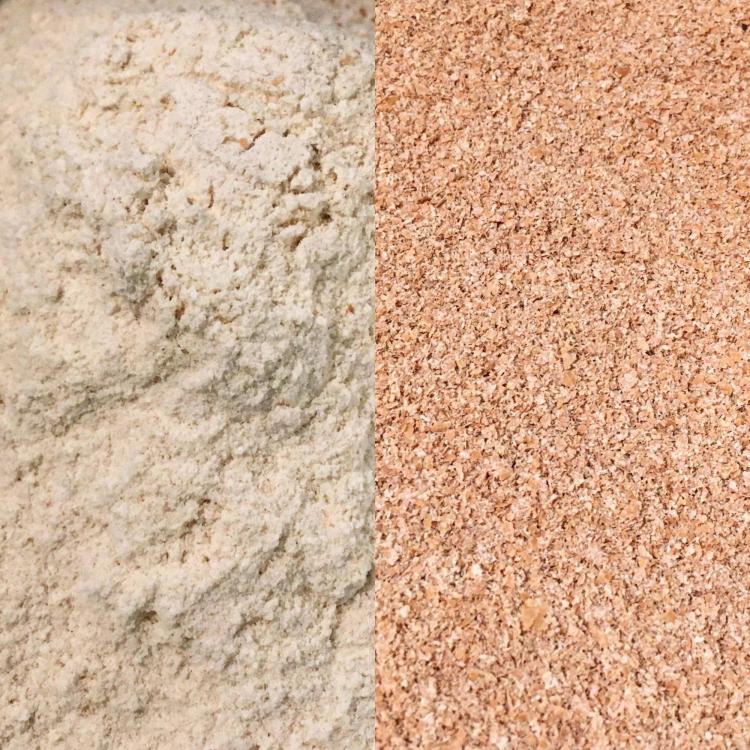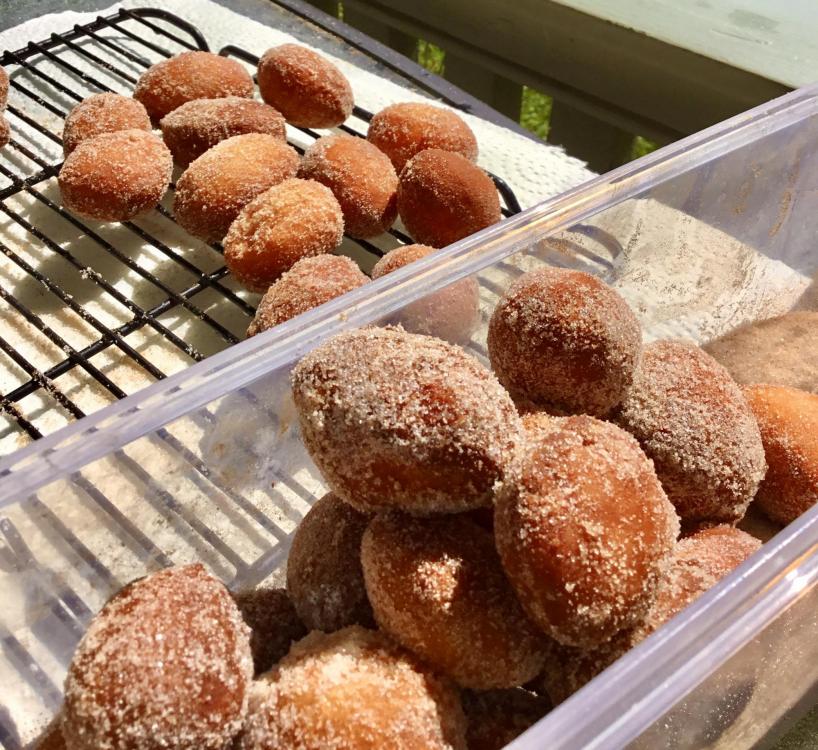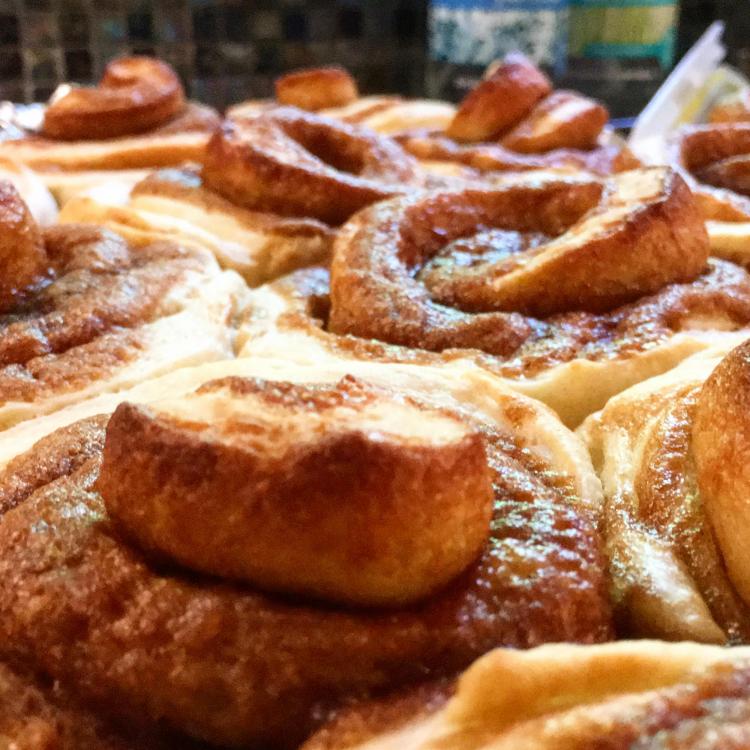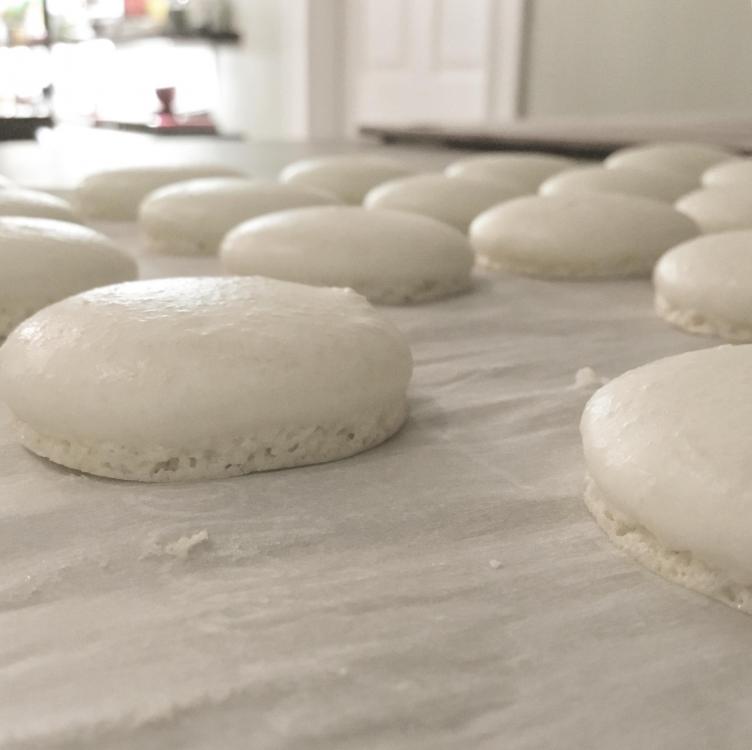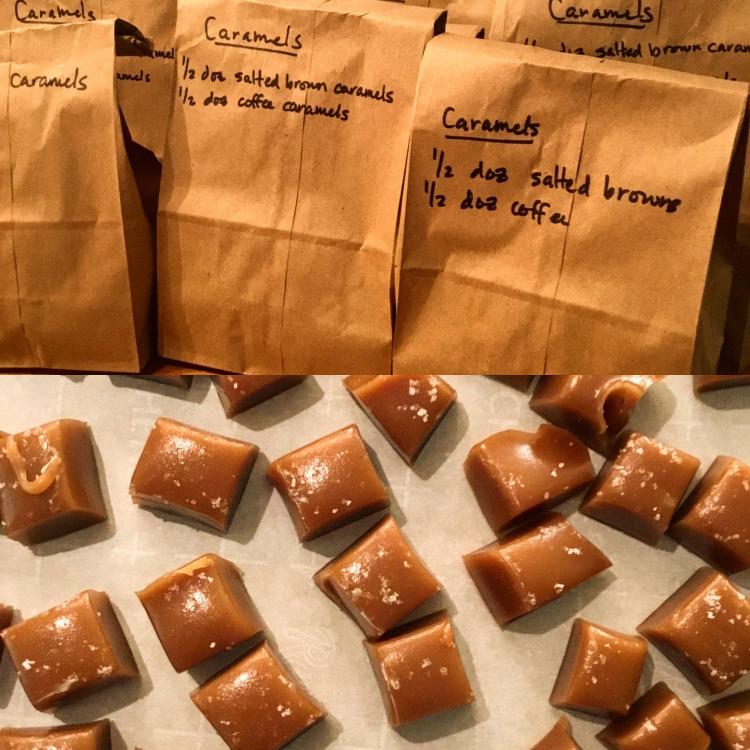
jimb0
participating member-
Posts
629 -
Joined
-
Last visited
Content Type
Profiles
Forums
Store
Help Articles
Everything posted by jimb0
-
That seed loaf is baller. Milled some red fife today: 80% extraction after a single pass through 70-mesh. Too much work to do at once, but all the 50-mesh stuff is back-ordered and I'm tired of using tiny sieves. I'll work it back in when I actually do the bread.
-
Yeah, there's the calculator but I'll mention I tend to add 4.5% sodium citrate by weight of cheese (that way you don't need to look it up every time to use). The amount of water that gets added depends on what I'm doing with it. Dips get more water (say, nearly 1:1) than some other things. You can even use quite a bit less water and make cheese slices.
-
well if that ain't impressive as all get-out. inspiring.
-
Your Daily Sweets: What Are You Making and Baking? (2017 – )
jimb0 replied to a topic in Pastry & Baking
Doughnuts and cinnamon rolls. Spent a few hours walking around the neighbourhood delivering sugar today. -
Your Daily Sweets: What Are You Making and Baking? (2017 – )
jimb0 replied to a topic in Pastry & Baking
Also practiced my macarons today; I think I’m finally pleased. These will get a schmear of the blackberry ganache I have setting up in the fridge -
“(x) I am in this picture and I don’t like it.”
-
As mentioned, you really just look and smell. If there's no obvious mould growth and it smells like yogurt, it's good to go. These sorts of foods originated explicitly because they were a way to keep dairy products edible for a long(er) period of time. Like with sourdough, a lot of these fermenting bacteria keep food from being infected with spoilage microbes both by decreasing the pH and by simply being able to outcompete intruders. A lot of these expiration dates are designed to be extra safe to both keep people happy and keep the sellers from having to deal with the issue.
-
Your Daily Sweets: What Are You Making and Baking? (2017 – )
jimb0 replied to a topic in Pastry & Baking
More quarantine snack packs for coworkers and neighbours. Caramels (half salted browns, half coffee) wrapped tonight; doughs in the fridge for baking and frying fresh tomorrow morning. -
You can totally do that. I tend not to bother using anything but sodium citrate and sometimes a little starch for baked applications, but you can, of course, use one of the carrageenans or some sodium hexametaphosphate. Prepare it as you would to eat that day, and let it come to room temp and freeze. Freezing it and then thawing it will probably break your emulsion, but you should be able to heat it up and whisk it back together easily enough. It’s a handy way of prepping sauce that’s pre-measured, but I’ll also mention that if you aren’t happy with the results/workflow, these sauces are very easy to prep in a microwave while you do other stuff - heat your water and sodium citrate to boiling, dump in your shredded cheese, and whisk. I even get lazy with stuff like cheddar and just melt big blocks of it on a plate and whisk that in. Use the microwave to reheat if it doesn’t come together quickly enough.
-
Ahh, I missed it when I watched the video; thanks for the clarification. Clearly I was only half paying attention. Definitely a cheaper option in comparison to buying something like a McCann.
-
That’s cool, though we just put a manifold mounted on the inside of our kegerator, so we can turn the gas on and off with a switch - the corny kegs themselves will carbonate water fine without anything else.
-
Are the new ones powdered or similar? sometimes one can have issues with that stuff.
-
The fire safety shops are also a good place to get gas, as they refill fire extinguishers. Our local ones now carry homebrew-specifics for that purpose. @cdh brew anything interesting lately?
-
Additionally, carbonating a half bottle means there's a much bigger head space of compressible air to fill, which means you could potentially fit much more CO2 into the bottle that's only partially filled with liquid. If you have the floor space and wherewithal, I recommend neither the SodaStream or the iSI (for carbonation, that is) as both are expensive in terms of ongoing costs. We converted a chest freezer (although you could also just use a refrigerator) with a tap. 10- or 20-lb tank of CO2 --> regulator --> corny keg filled with water == 5 gallons of fizzy water on tap at a time. We have two kegs for water, so that when one is emptied, we just pop the hose over (simple ball joint so it takes five seconds) and refill the other tank. It will carbonate on its own in a day or two, and there's never any kind of risk. A 5-gallon keg full of water is heavy, though, so that's a consideration. If strength is an issue, you can use 1- or 3- gallon kegs, as well, or even just buy a carbonator cap and carb your own 2L bottles of cold water. More expensive (but still lower TCO) would be to install a used carbonator. This whole setup is worth it for us because we drink, like, obscene amounts of fizzy water. At least 5 gallons a week or so.
-
I'm always mad (not really) that they never make any of the limited ginger ales with non-nutritive sugars. alas. anyway this totally goes against the spirit of a ready-to-eat forum, but for those interested, ginger beer is suuuuper easy to diy.
-
would eat all of these, repeatedly these, too; they look delicious and i love tonka beans. i'm actually making some coffee caramels tomorrow. nice stratification!
-
For those without silicone pans, I super recommend the parchment paper muffin/cupcake liners. They spring off of the cooled cakes, and they're often usable for two or three bakes.
-
Ahahahahahahah I got a text from my neighbour a couple of weeks ago asking me if i wanted any discard because they've jumped onto the wagon.
-
I found an article about the owner's daughter, who now runs her own biscotti business. Specifically they make them in an italian style called biscotti di prato. googling that gave me this LA times recipe; you might try there: https://www.latimes.com/recipe/cantucci-biscotti-di-prato
-
Starter waste has been one of my biggest cooking pet peeves, haha. i'm glad people are starting to realize how unnecessary it is; small amounts still have millions of microbial cells. These are lovely. What was the overall rough hydration level of your dough?
-
I deeply appreciate reading all of the toast experiments, because it's so foreign to me. I'm pretty sure i'd get divorced if i told my SO that this is how we'd be doing toast from now on (vs the long slot breville unit we have now). We consume a shameful quantity of toast in this household.
-
this sums up my feelings on the subject. I’ve often kickstarted starters with commercial yeast and lactobacilli from yogurt whey (because you have an established, working starter from the get-go); the starter will behave identically to something wild with results I wouldn’t know weren’t traditional sourdough if I hadn’t done it myself. Could you tell a difference side by side between two loaves? Perhaps. But after a while such a starter will inevitably be colonized by a selection of microbes anyway so at that point the question is likely moot.
-
possibly? Bit expensive for me to find out. Cutting might be the wrong term, but they do seem to impact development at some level. The guy that wrote flour lab is still talking about it, anyway.
-
Sorry, I skimmed your post before and thought that's what had happened. One of the problems with whole wheat flours is that the bran and other bits will actually cut your gluten strands, which is sometimes why they can be hard to knead and rise. A possible solution to that sort of problem is to sift out the bran and reincorporate it later, or use it as the flour for your banneton, etc. I will say that I've seen the 500F number quoted all over the internet and I think it's too high; I've often seen posts like yours with people trying to troubleshoot burned breads as a result. I never start that high. I want to say I tend to do 450 / 400, depending on the bread but honestly I play fast and loose. I'm sure your plan is reasonable.
-
So, honestly I think sourdough is a bit overrated. Is it delicious? Yes. Do I still go to a lot of trouble experimenting with it? Sure. But a lot of the benefits imo are down to just the extended fermentation time it gets. When it comes down to using the mediocre old white flours we all buy from the store, many sourdoughs are barely distinguishable from regular bread outside of the tang. Anyway to your question, well, sure - if you add commercial yeast, you're going to almost assuredly speed up the fermentation time, which means you'll prep and bake your loaves more quickly, before the 'wild' microbes get a chance to work on some of those compounds in your dough. But your starter is still going to be chock full of amylases and proteases that will work on the sugars and proteins in your dough and create many of the same compounds. As mentioned, it'll probably be somewhere in between a standard and wild ferment, but environmental factors can play around with that. Removing the bran and working it back in later is definitely the way to go. What's the temperature you're baking them at? Do you reduce the temp partway through the bake at all?

